
views
Getting Ready to Dance
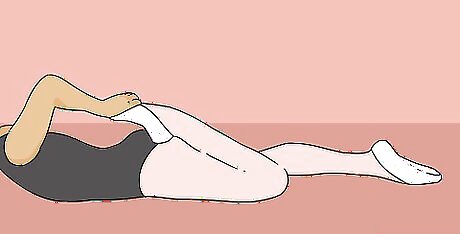
Stretch your muscles thoroughly. Stretching is important to loosen muscles, strengthen muscles and to elongate your posture. It is vital that it is done at the beginning of each ballet session, including before a performance. When taking on ballet, it is important to stretch daily for at least 15-30 minutes, to give the muscles ample opportunity to warm up, reducing the risk of injury. You should also stretch to "wind down" at the end of ballet dancing.
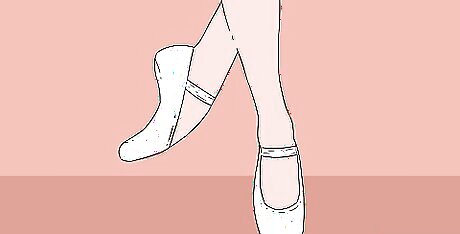
Always wear ballet slippers. Properly-fitted ballet shoes should be snug, but not so tight they cut off blood flow and create numbness in the feet. There are different styles and types of shoes, so ask your ballet teacher or a salesman at the store for advice, given your intentions for dancing. Don't buy shoes to grow into, because your feet will seem flexed when you pointe and will look flat. You should fit them to where the drawstring is tied slightly loose. If your drawstring is longer than your pinkie then you should cut it off till it is roughly the size of your fingernail. The drawstring just completes the fit. It isn't made to tighten overly large shoes. If you can't buy ballet shoes, that it is okay. Use socks without the stickies on the bottom, so you can turn!
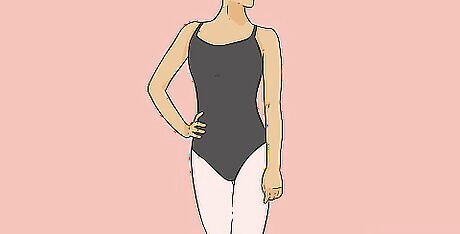
Wear comfortable and snug-fitting athletic clothes. The most important thing is that you are comfortable, and that you're not wearing baggy or loose fitting clothing so you can make sure you're forming and moving correctly in the mirror. A plain black leotard and pink tights are usually a safe bet. Pink or black ballet slippers are also appropriate. Shop at high quality stores. If you're signed up for a class, check with your instructor to find out if there is a dress code at the school. Some schools may have students wear the same thing and others may just require any type of leotard and tights and sometimes ballet skirts. Mostly they require tight fitting clothing so they can see that your muscles are working properly and so on.
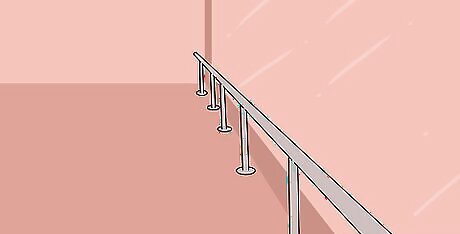
Find an appropriate space to practice. Ballet is less about learning the moves and more about perfecting them. The moves themselves are relatively straightforward, but the positing, the timing, and the elegance required takes a lifetime of practice. For this reason, it's always better to practice ballet in a ballet studio under the guidance of a good instructor, who will be able to correct your positioning and make sure that you're dancing properly. A dancing studio is equipped with mirrors for correcting your positioning and seeing what you're doing accurately, and a barre for practicing. If you want to practice at home, make sure you've got enough open space to move freely, preferably on a hardwood floor. The back of a chair can replace the need for a bar. Position a large mirror so you can check your positioning and see what you're doing.
Learning the Barre Basics
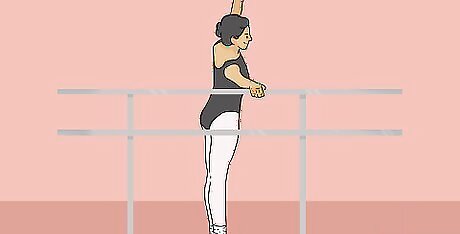
Start every dancing practice at the ballet barre. At the barre, you learn the basics of ballet that will be important as you progress. If you're just getting started, an entire dance practice should involve barre work. This is vital for building your strength, agility and flexibility, so do not see it as wasted time. If you skipped this, you wouldn't be able to dance. Even professional dancers begin each class at the barre.
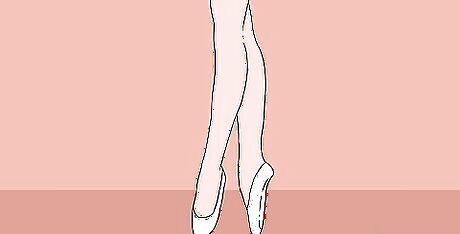
Learn the fundamental positions. The fundamental cornerstone of ballet, and the basis from which all your more complicated moves will be developed are the five starting positions (and the "parallel position" which some consider the sixth position). You won't be able to learn to do anything else until you practice, perfect, and make automatic the six beginning positions. These should be so ingrained in your muscle memory that they're part of your DNA. All positions should be practiced either facing the barre or with your left hand on the barre. Beginner dancers usually start facing the barre, and intermediate or advanced dancers usually start with the left hand on the barre while practicing positions.

Practice first position. In the first position, your feet should be turned out from your body, and held together at the heels. Your legs should be straight and kept together, your back should be straight and your head held high. Maintain excellent posture and balance.
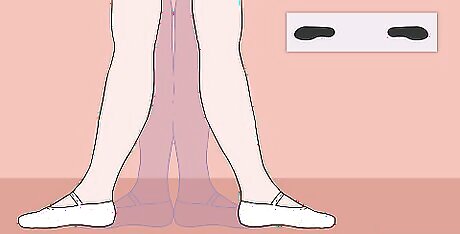
Practice second position. In second position, your feet will have the same angle as in first, except that your feet should move so they are about shoulder width apart. Widen your base of support, but maintain the same posture and poise when in second as when you're in first. Practice transitioning from first to second position without changing the angle of your ankles.

Practice third position. To move into third position, bring your lead foot (usually your dominant foot, or the foot you use to kick with) behind your other foot. The heel of your lead foot should be even with the ankle strap on your other ballet slipper. Move your hips forward and maintain your balance. Your legs should be straight and your shoulders should be back.

Practice fourth position. To transition into fourth position from third, move your lead foot back, spreading your weight in a backward direction, much as you did between first and second position.
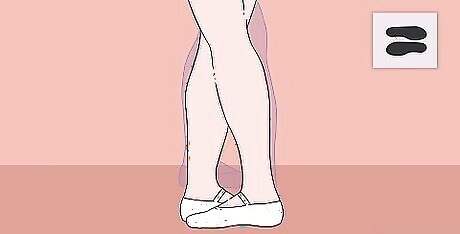
Practice fifth position. Here, the positions start to get slightly more complicated. To transition into fifth position, bring your other foot back toward your lead foot, bending your ankle so your heel is on top of your lead toe. Your knee should be flexed slightly, but your back and shoulders should remain very straight and balanced. Practice this transition frequently.
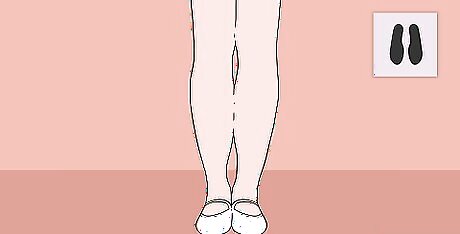
Finish in parallel position. Both of your feet are together, side by side, like parallel lines.
Practicing Plies, Tendus, and Extensions
Do plies. Plies are like squats, performed in each of the different positions. There are two types of plies: grande plies and demi plies. Beginners do plies in the first and second position. Intermediate and advanced do them in all the positions except third and sixth. To do a demi plie, you want your legs to form a diamond, essentially. Bend your knees and squat so your knee forms a perfect 90-degree angle with your thigh and your shin. You should support your weight on the balls of your feet, keeping your heels off the ground and flexing your calves as you dip. To do a grande plie, you want to dip down much farther, so your thighs are almost parallel with the floor. You'll also dip your arm while you do this. As you practice plies, focus on keeping your back very straight and your posture secure.

Do tendus. Tendus are essentially points and stretches with your lead foot. A typical tendu combination is tendu en cross, which means "in a cross." You'll basically stand in first position and point with your lead toe to the front, to the side, and to the back. It's common to mark the floor with tape to help you learn. You want to step a full step in front of you, leading with your heel and bringing your toe to a point in front of you. The distance should be equal in front, to the side, and behind you. The exact distance of the step will vary, depending on the dancer and the length of your leg. You want your tendu to turn your legs into a right triangle, your plant foot remaining straight and your lead foot going far enough bring your leg straight.
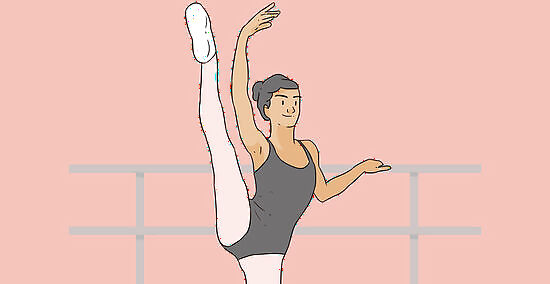
Practice extensions. Stand very straight, in either first or fifth position. You may face the barre or be sideways to it. As you progress, you will get strong enough to do it at center. Lift one leg to the side or front, keeping it straight, as high as you can. Point your feet once your foot leaves the floor. Keep both of your knees very straight and maintain correct posture. It's important to not lift your hip or butt to get your leg higher. Always turn your leg out, never turned in. Keep correct technique by slowly lowering your leg and standing in the position from which you started, usually either first or fifth.

Try letting go of the barre. Make sure you are balanced by testing to see if you can let go of the barre. Keep your leg up there. This makes you stronger. Make sure you are not slouching or leaning your core towards or away from the leg that you have extended.
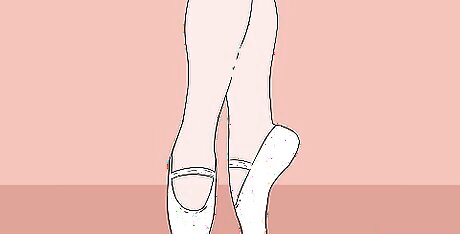
Go en pointe when your teacher says you are ready. The next step in ballet training is dancing en pointe, which involves using pointe shoes and balancing yourself on your toes. While the expression "on your toes" is often used, there is really a thick layer between your toes and the floor. It shouldn't be too painful. It's one of the most challenging and exciting parts of ballet study, and it needs to be done with the aid of an experienced instructor. This is typically done after four or five years of intermediate to advanced ballet study. You should never dance en pointe without your teacher's permission! In most ballet schools teachers will not want you to even go en pointe at home. This is because without experience, you may strain your toe and feet muscles. Try going en pointe for small durations of time first, and then slowly work your way up.




















Comments
0 comment